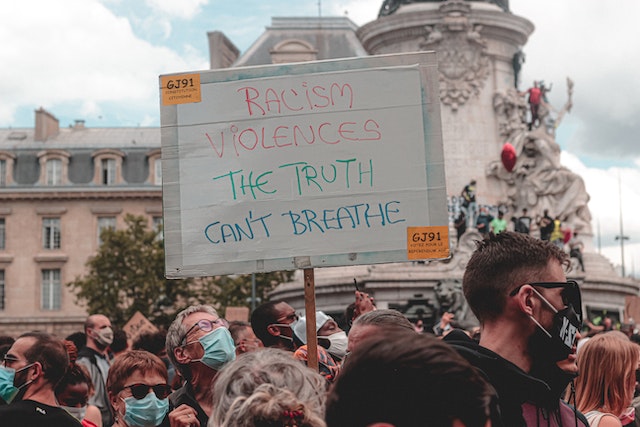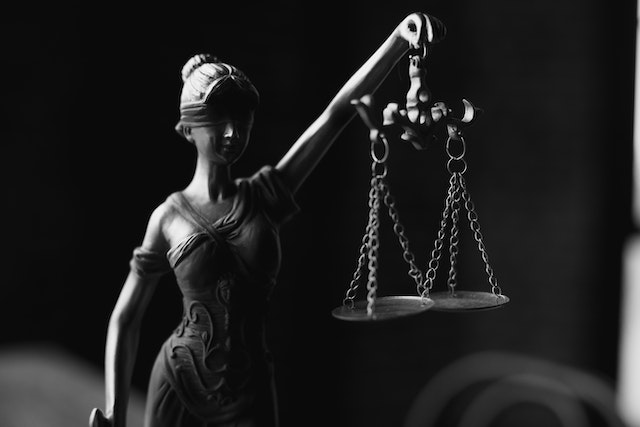What Is Social Injustice?
Social injustice is a term used to describe a situation in which individuals or groups of people are treated unfairly or unequally by society based on factors such as their race, ethnicity, gender, sexual orientation, religion, or socioeconomic status. Social injustice can manifest itself in various ways, including discrimination, inequality, and marginalization.
One of the most visible forms of social injustice is discrimination. Discrimination can take many forms, including institutionalized discrimination, which is embedded in laws, policies, and practices that favor one group over another. Discrimination can also be more subtle, such as when individuals are denied opportunities based on their personal characteristics, like their skin color or gender.
Another form of social injustice is inequality. Inequality occurs when individuals or groups have unequal access to resources, opportunities, and power. For example, people from lower-income backgrounds may have less access to quality education, healthcare, and job opportunities than those from more affluent backgrounds.
Marginalization is another form of social injustice that refers to the exclusion of individuals or groups from mainstream society. This exclusion can be intentional or unintentional, and it can result from a variety of factors, such as language barriers, cultural differences, and social stigmas.
Social Injustice in America
Social injustice is a pervasive problem in America that has long-lasting and far-reaching effects on individuals and communities. The roots of social injustice are deep, and they stem from a history of systemic discrimination and inequality based on race, gender, sexuality, and socio-economic status. Here are some examples of social injustice in America:
- Racial discrimination: Racism is a pervasive problem in America that affects people of color in many aspects of their lives, including education, healthcare, housing, and employment. Black and brown communities are disproportionately affected by police brutality and mass incarceration, leading to a cycle of poverty and oppression.
- Income inequality: Income inequality is a growing problem in America, with the gap between the rich and poor continuing to widen. People living in poverty have limited access to resources and opportunities, leading to a cycle of poverty and social exclusion.
- Gender discrimination: Women in America continue to face discrimination in the workplace, including unequal pay and limited opportunities for advancement. Women are also disproportionately affected by domestic violence and sexual assault.
- LGBTQ+ discrimination: Members of the LGBTQ+ community continue to face discrimination in many aspects of their lives, including employment, housing, and healthcare. Transgender individuals, in particular, face high levels of discrimination and violence.
- Environmental injustice: Environmental injustices are disproportionately experienced by low-income and communities of color, which are more likely to be exposed to pollution and hazardous waste.
These examples illustrate how social injustice affects different communities in America in different ways. Social injustice perpetuates cycles of poverty, discrimination, and oppression, and it affects individuals’ mental and physical health, educational opportunities, and economic well-being.

Social injustice is a pervasive problem that affects people all over the world. It has a significant impact on individuals and communities, both in terms of their physical and mental health, as well as their social and economic well-being. Social injustice can lead to a lack of trust in institutions, social unrest, and even violence.
To address social injustice, it is essential to first recognize it and understand its root causes. This involves listening to the experiences and perspectives of those who are most affected by it. It also requires a commitment to promoting equity, diversity, and inclusion in all areas of society, from education and employment to healthcare and politics.
Causes of Social Injustice
- Historical and systemic discrimination: Discrimination based on race, gender, sexuality, and socio-economic status has been entrenched in American society for centuries. Historical discrimination has led to systemic structures that perpetuate inequality, such as redlining in housing and discriminatory hiring practices.
- Economic inequality: Economic inequality is a growing problem in America, with the wealth gap between the rich and poor continuing to widen. Economic inequality leads to limited access to resources and opportunities, perpetuating cycles of poverty and social exclusion.
- Political polarization: Political polarization in America has led to the marginalization of certain groups, particularly those who are politically and economically disenfranchised. This polarization has made it difficult to enact policies that promote social and economic equality.
- Lack of diversity and representation: The lack of diversity and representation in positions of power and influence perpetuates discrimination and inequality. This lack of representation means that the needs and concerns of marginalized groups are often overlooked.
- Inadequate social policies: Inadequate social policies, such as limited access to healthcare and education, perpetuate cycles of poverty and social exclusion.

Overcome Social Injustice
Overcoming social injustice is a complex and ongoing process that requires the involvement and commitment of individuals, communities, and governments. Here are some strategies that can be used to overcome social injustice:
Raise awareness: Raising awareness of social injustice is the first step in addressing the issue. This can be done through education, media campaigns, and social media activism. The goal is to increase public awareness and understanding of the issue and to promote empathy and solidarity.
Advocate for policy change: Advocating for policy change is a crucial component of overcoming social injustice. This involves advocating for policies that promote social and economic equality, such as affordable housing, accessible healthcare, and equal pay. It also involves advocating for policies that address issues such as police brutality, mass incarceration, and environmental injustice.
Support marginalized communities: Supporting marginalized communities is an essential aspect of overcoming social injustice. This involves providing resources and opportunities to marginalized communities, promoting diversity and inclusivity, and elevating the voices of those who have been traditionally marginalized.
Promote dialogue and understanding: Promoting dialogue and understanding is key to overcoming social injustice. This involves engaging in respectful and open-minded conversations with people from diverse backgrounds, promoting empathy and understanding, and working to break down barriers that divide communities.
Take action: Taking action is a crucial component of overcoming social injustice. This can involve volunteering, donating to organizations that support marginalized communities, or engaging in activism and protest. It also involves being aware of and challenging one’s own biases and assumptions.
In conclusion, social injustice is a complex issue that affects many people around the world. It is a problem that requires a collective effort to address, through promoting understanding, empathy, and social change. By working together, we can create a more just and equitable society for all.

